In tubeless tires, which do not have a tubular tube on the inner surface of the wheel rim and tire, the tire bead adheres to the rim to ensure air tightness. However, depending on the hardening of the bead over time and the condition of the rim in contact with the bead, the air inside the tire may gradually leak out. In such cases, bead sealers come in handy.
- Tubeless tires that maintain air pressure by keeping the bead and rim in close contact
- Possible air leakage depending on the condition of the contact area
- Sticky bead sealer even after drying
- Effective in improving the sealing of hardened beads and damaged rims
- POINT
Tubeless tires that maintain air pressure by keeping the bead and rim in close contact
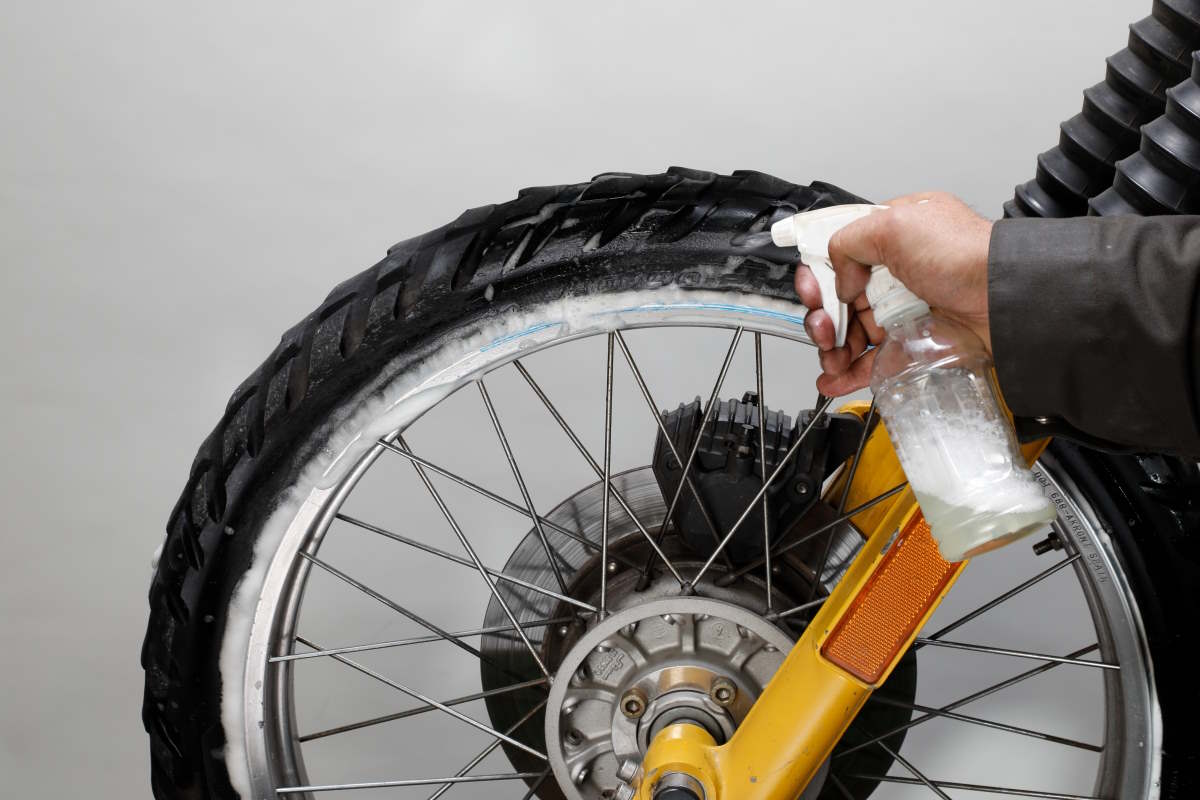

If the tire pressure gradually decreases even though there are no foreign objects on the tread surface and the tire is not punctured, a poor adhesion between the rim and bead is suspected. To check for good adhesion, spray soapy water.
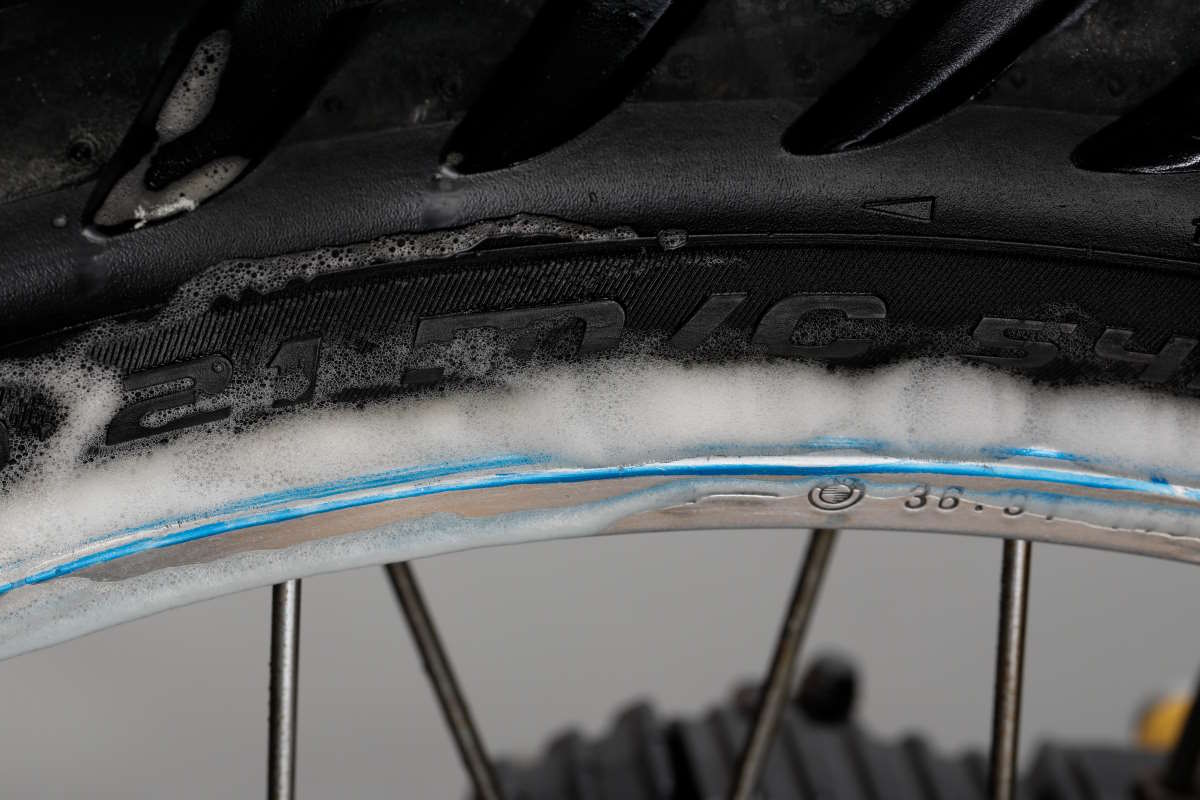

If bubbles appear like crab bubbles, this is an indication that air is leaking from there. If the air leakage is slow, you may not be able to see the bubbles, so do not make a judgment at first, but check the tire several times. If you are still not sure, you can remove the tire and apply bead sealer instead of just checking.
Tubeless tires, which are sometimes installed on spoked wheels as well as cast wheels, feature an air chamber created by the inner surface of the rim and the inner surface of the tire, instead of storing air in a tubular tube. With a tube tire, if a nail or foreign object steps on the road penetrates the tread, and punctures the tube, the air leaking from the tube is released into the gap between the tube and the inner surface of the tire, causing the tire to collapse at once. This is due to the two-layer structure of the tire and tube. In contrast, a tube tire maintains air pressure in one layer of the tire even if a nail or other object penetrates the tread, and the foreign object itself acts as a “plug” so that the air inside the tire may not escape while the object is stuck in it.
Also, when repairing a puncture in a tube tire, the tube must be pulled out and a patch applied to the tube itself to close the hole. Tubeless tires can be repaired without removing the tire from the wheel, simply by inserting the repair material from the tread surface. Depending on the size of the foreign object and the size of the hole, even tubeless tires may lose air all at once, but the tendency is for tubeless tires to be more resistant to accidents than tube tires. At the beginning of this article, I mentioned that tubeless tires are increasingly being used not only on cast wheels but also on spoked wheels, but for tubeless tires to be used, it is essential that there be no holes on the inner surface of the rim. Therefore, spoke wheels with nipple holes penetrating the inner surface of the rim must be tubeless.
Possible air leakage depending on the condition of the contact area
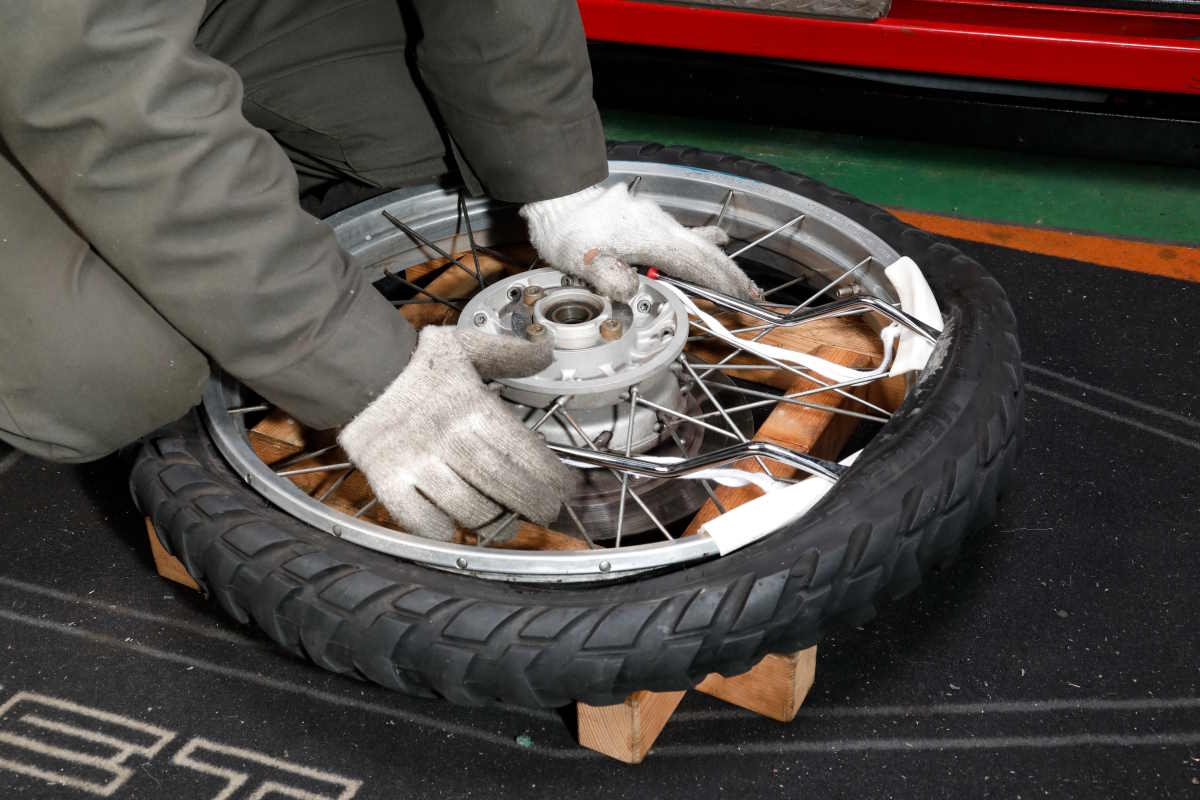

When changing tires as a DIY project, it is not uncommon for the tire lever to damage the bead or rim.
Although bead flexibility often decreases with age, it is important to drop the bead on the side 180° opposite to where the lever is inserted into the center of the rim, as shown in the image. In this way, there is more room on the side where the tire lever is inserted, and the bead and rim are less likely to be damaged.
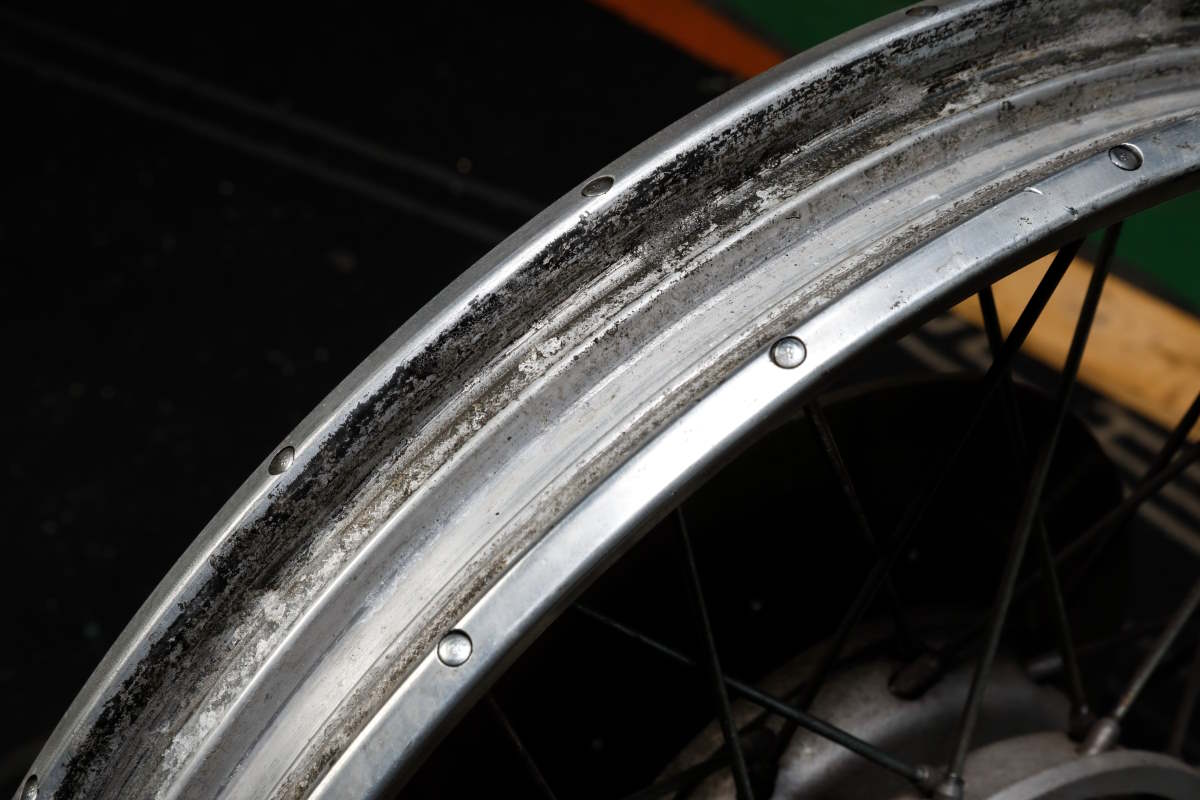

There was rubber stuck to the inner surface of the rim, perhaps from bead sealer applied in the past or from old tire beads. Flexible rubber, however, is hardened like plastic and may be the cause of air leakage.
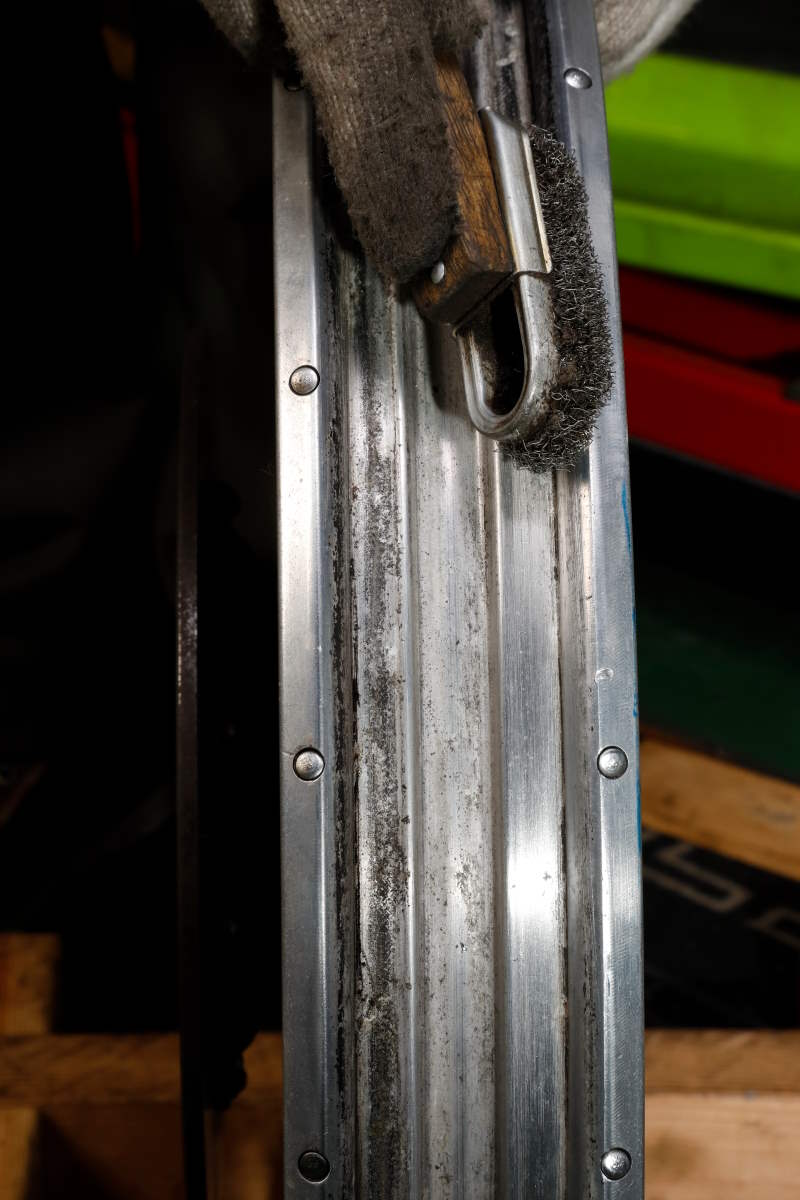

Scrubbing with a wire brush will cause it to flake off like eraser crumbs. Regardless of whether bead sealer is used or not, the rule of thumb is to remove dirt from the inside of the rim when changing tires. If there are scratches caused by tire levers, smooth the surface with sandpaper or a file.
In a tubeless tire, the tube does not need to be inflated like a balloon to maintain air pressure because the bead and rim of the tire are tightly sealed to ensure an airtight seal. On the other hand, if the rim and bead are not tightly sealed, there is a possibility of air leakage. If a tubeless tire gradually loses air pressure over time even though there are no nails or pieces of glass stuck in the tread surface, there may be a problem with the contact between the rim and the bead. Causes include “bead hardening,” “bead breakage,” “rim aging,” and “rim damage.
Tire rubber is flexible when new, but hardens over time. Although hardened tires should normally be replaced because of reduced grip, continued use of tires with low mileage and remaining grooves can cause air leaks due to reduced flexibility and sealing properties of the bead that makes contact with the rim. In some cases, air leaks are caused by damaging the bead with the tire lever when reassembling the tire yourself. This is partly related to the hardening of the bead. When the tire is new, a slight scratch is sealed by the flexibility of the rubber, but as it hardens and seals less well, the possibility of leaks occurring from the damaged area increases. As for age-related deterioration of rims, on older or out-of-print cars, the paint, surface treatment, or material itself on the inside surface of the rim can deteriorate, causing unevenness on the surface and gaps in the contact area with the bead, which can lead to air leaks. Rim damage, like bead damage, is a pattern of air leaks from scratches caused by tire levers that have been dug into the tire during DIY tire replacement.
Sticky bead sealer even after drying
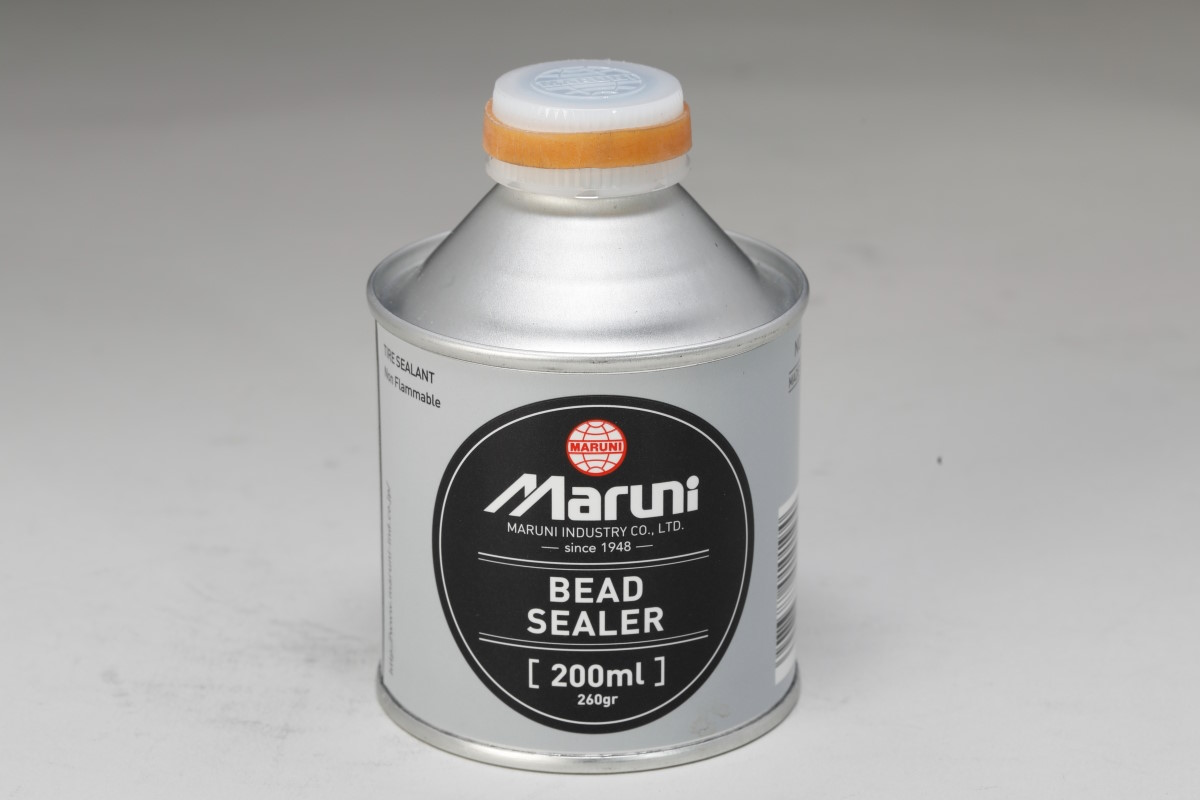

Bead sealers are sold by puncture repair material manufacturers. Tire wax is the only thing that comes to mind when thinking of things to apply to tubeless tire wheels and tires during assembly, but bead sealer is also a popular item for tire professionals who deal with wheels in various conditions.
Bead sealer” is expected to be effective in improving the adhesion of beads and rims that have deteriorated due to aging, accidents, or problems. Bead sealer is a liquid rubber-like substance that, unlike adhesives, does not stick to the bead or rim and does not come off when air pressure is applied. It is applied to the bead or rim and left on for a while (15 minutes or so) to form a flexible rubber film that restores sealing to the contact area when the tire is assembled.
Bead sealer is one of the most commonly used chemicals in tire stores, and is often applied preventively to wheels with rough inner surfaces of rims when changing tires.
Effective in improving the sealing of hardened beads and damaged rims
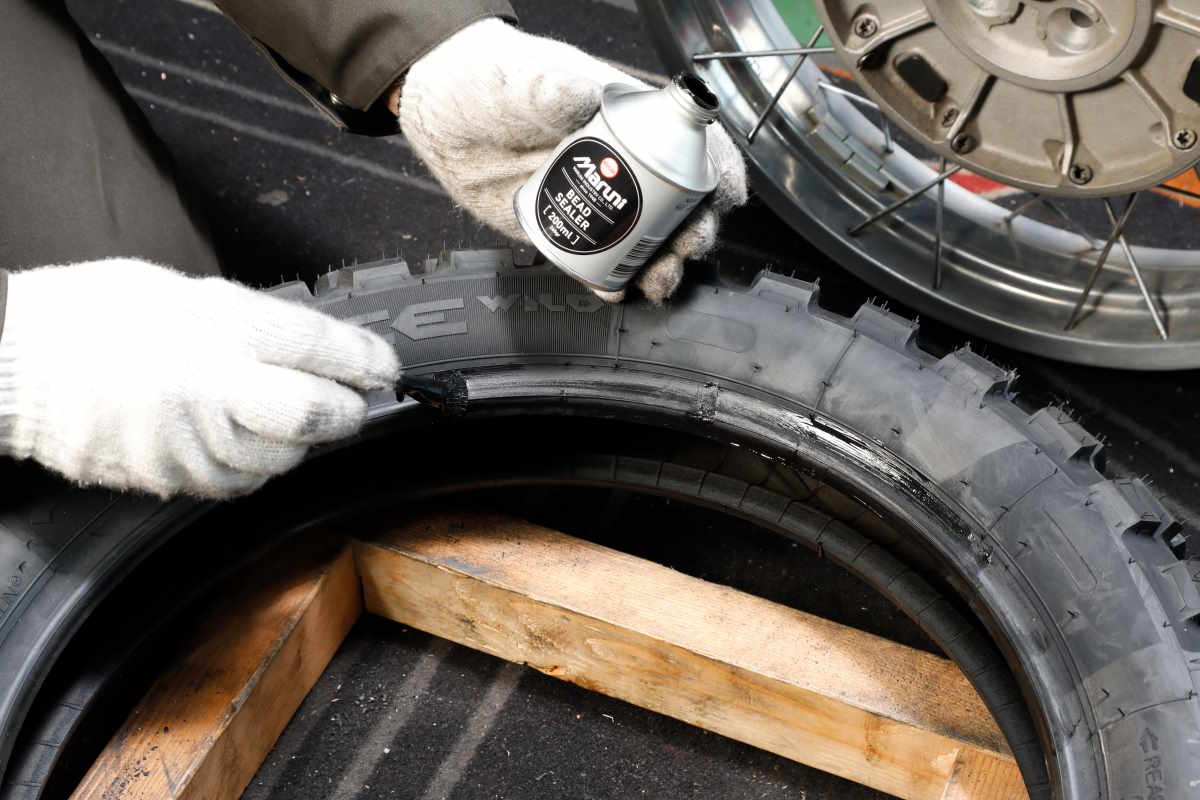

Apply to beads with the brush attached to the lid of the can so that the film is even. It is not necessary to apply the coating over and over.
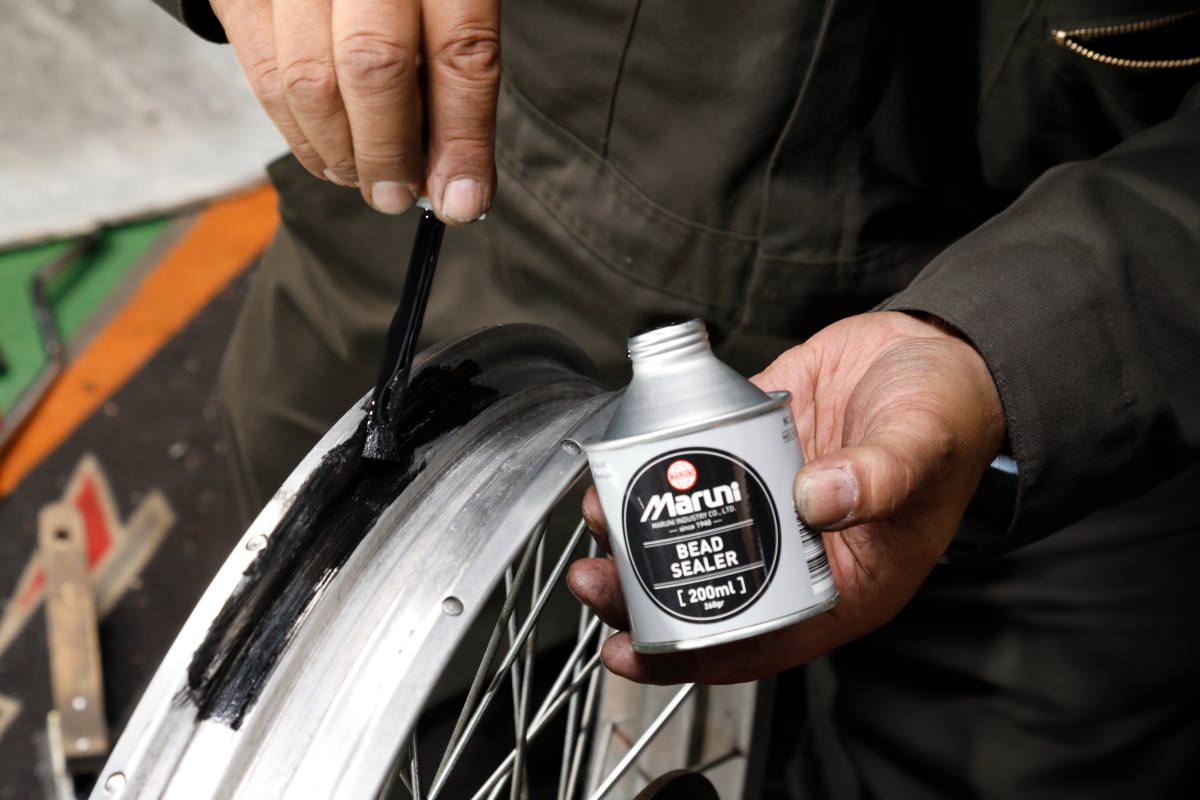

Apply bead sealer to the rim side, which has been decreased by removing sticking rubber stains. After 15 minutes of drying, the surface remains flaky to the touch and looks as if it has good sealing properties.
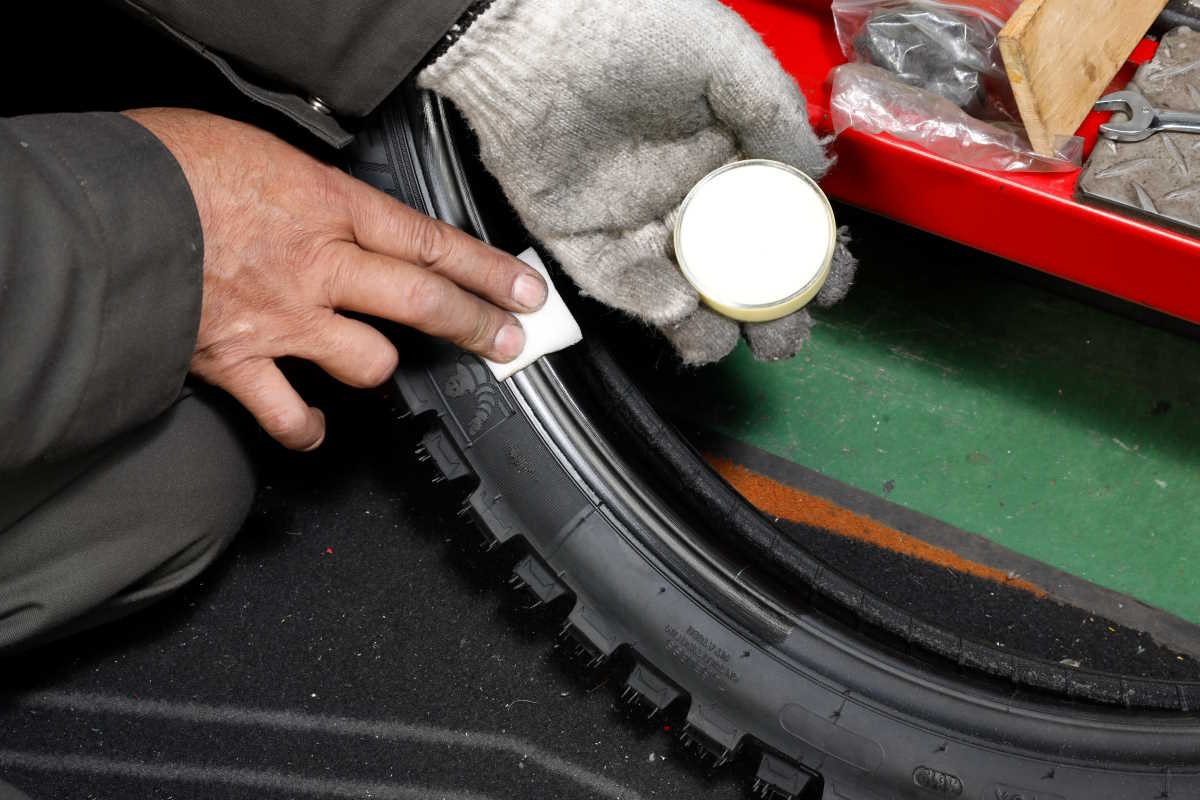

There is nothing wrong with applying bead sealer or tire wax to ensure smooth assembly.
In the example shown here, a bead sealer was applied to address air leaks caused by the hardening of the tire and rubber sludge stuck to the inner surface of the rim. If the rim is not damaged significantly and there is only rubber sludge, it may not be necessary to apply sealer by simply cleaning the rim with a wire brush, etc. However, by creating a rubber film, adhesion to the bead and air retention can be expected to increase. In the example, the tire was replaced with a new one, but if the tire is to be reused without replacement, it would be better to apply the coating to the bead side as well. If the bead has been damaged by a tire lever, be sure to apply it before inflating the tire.
Even though the major advantage of tubeless tires is that you can repair a puncture without removing the tire from the rim, it can be a tedious process to remove the tire in order to apply bead sealer. However, if you see a gradual loss of air without a puncture, and the soapy water you sprayed on the boundary between the rim and the tire bubbles and bubbles, you may be able to solve your problem by removing the tire, degreasing and cleaning the inner surface of the rim, and then applying bead sealer.
POINT
Point 1 -Tubeless tire whose internal pressure is maintained by the sealing property of the contact area between the inner surface of the rim and the bead
Point 2 – If air leakage occurs due to poor sealing, bead sealer can be applied to the rim and bead for improvement